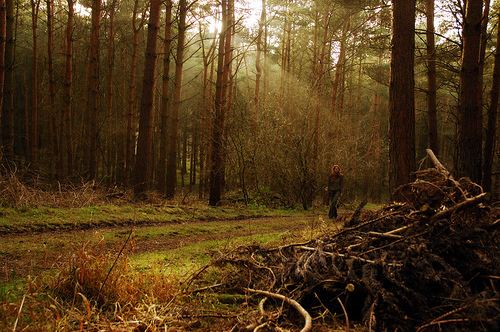 | ||
Similar Shipton railway station, Cogges Manor Farm, Radcot Bridge, Ditchley, Blenheim Palace | ||
Wychwood forest chipping norton
The Wychwood, or Wychwood Forest, is an area now covering a small part of rural Oxfordshire. In past centuries the forest covered a much larger area, since cleared in favour of agriculture, villages and towns. However, the forest's area has fluctuated. Parts cleared for agriculture during Britain's centuries under Roman rule later reverted to forest. The existence of the ancient Wychwood is recognised by the authoritative Victoria County History, but the planned Volume XIX has yet to be completed.
Contents
- Wychwood forest chipping norton
- Map of Wychwood Forest Chipping Norton UK
- Shipton under wychwood part two
- Etymology
- Toponymy
- History
- Foresters of Wychwood
- Modern Wychwood
- Paintings
- Literature
- References
Map of Wychwood Forest, Chipping Norton, UK
Shipton under wychwood part two
Etymology
Wychwood is derived from an Old English name Huiccewudu meaning 'wood of a tribe called the Hwicce. The Hwicce were the Anglo-Saxon people living in the area from some time in the 6th century until the assimilation of the Old English peoples into the wider Middle English society.
Toponymy
Three villages take part of their name from Wychwood Forest: Milton-under-Wychwood, Shipton-under-Wychwood and Ascott-under-Wychwood. These villages, commonly referred to as The Wychwoods, used to be part of the Royal Forest of Wychwood.
History
Foresters of Wychwood
While Wychwood was a designated Royal Forest, royalty entrusted the management of the forest to loyal servants. The men in charge of the forest were called Foresters of Wychwood and, in later years, Keepers of Wychwood. Foresters were tasked with supplying the king with deer, wood, timber and charcoal. They were also charged with upholding the king's law by protecting the forest with the assistance of under-foresters, riding foresters and walking foresters. Foresters, together with verderers (judicial officers) could hold court and try offenders for both minor and major offenses. The foresters of Wychwood were in the family of the de Langleys until 1361, followed by the Earls of Warwick until 1499. Management was then given by the kings as favors to courtiers for life, among them were Robert Dudley (Earl of Leicester), Sir John Fortescue (Chancellor), Lord Clarendon (Chancellor) and George Spencer, the 4th Duke of Marlborough.
Modern Wychwood
Some of the land that had been cleared for agricultural use was purchased by the Woodland Trust, and re-planted with native English deciduous trees creating Shillbrook Wood, a 9-acre (3.6 ha) site near Bampton, and Eynsham Wood, a 13.37-acre (5.41 ha) site near Eynsham.
Since the late 1990s there has been a resurgence of interest in the history and identity of the Wychwood, exemplified by the founding of the Wychwood Project. Since 2000 'Forest Fairs' have been held at a variety of locations within the old Wychwood boundary. These are a better-behaved revival of traditional Fairs that were closed down in 1856 because of rowdy behaviour.
The modern Fairs are centred on rural communities and crafts. They attract a large number of visitors even in bad weather.
The Oxford University Historical Re-Enactment Society, also known as the Wychwood Warriors, is a reenactment group that recreates aspects of Saxon life in Wychwood during the Dark Ages.
The Wychwood has also given its name to a set of three villages in Oxfordshire, Milton-under-Wychwood, Shipton-under-Wychwood and Ascott-under-Wychwood. The villages together are known by locals as "The Wychwoods".
Fragments of the ancient forest survive, one on the Cornbury Estate near Charlbury retaining the name 'Wychwood'. This, a Site of Special Scientific Interest, contains an eponymous national nature reserve.
